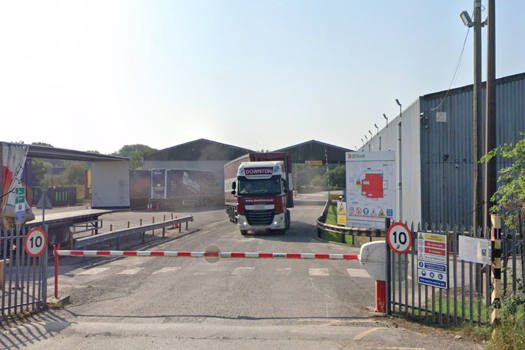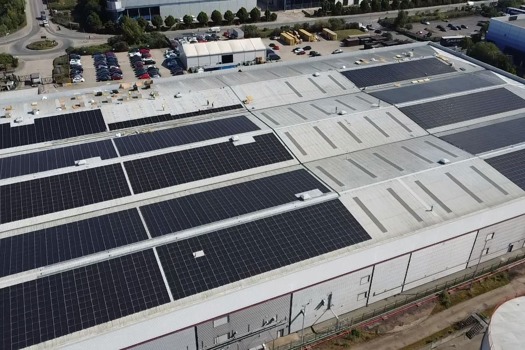The classic rebuffs of UK printers to print buyers considering off-shoring work to China are based on working practices and quality. While it's no secret that they may be able to undercut European rivals (if the scaremongers are to be believed, by up to 50%, even with transport factored in), the myths are that Chinese companies rely on inferior technology, give scant regard to environmental issues and employee rights and, usually the clincher, produce substandard products. The bad news is that these are generalisations are getting a bit tired, certainly in the case of Leo Paper Group.
Here are some of the bare (and breathtaking) statistics about Leo: It employs more than 17,000 staff (more than four times the number employed by Polestar); its main 15,000 staff factory in Heshan in the Guandong province of China covers 3m sqm and has a production and storage area of 320,000sqm (equivalent to 44 football pitches); Heshan alone is capable of filling 300 shipping containers with work every week (the record is 80 in one day); and finally (take a deep breath), it exports almost 100% of its output, 55% to the US and 45% to Europe, through its sales offices in London, Antwerp, Seattle, and New York. In short, be afraid, be very afraid.
Leo started life in 1982 as a Hong Kong-based manufacturer of paper bags. It still has its head office in Kowloon Bay, but in 1994 it opened its Heshan factory in the Xijiang River Industrial Development Area (after gaining a printing licence, which had to cleared by 14 Chinese government departments), and moved all production to China. Today, the group, which includes Leo Paper Products, Leo Paper Bags Manufacturing and Leo Reprographic, has three production sites in Guangdong province (where it's estimated that 65% of Chinese printers are based): Heshan Astros Printing in Heshan (the main facility); paper bag operation Nanhai Carcoin Paper Products in Foshan; and premium cosmetic packaging site Heshan Leo Packaging & Printing 15 minutes from the main factory.
The group's core products include case and limp bound trade books, children's board, die-cut and pop-up books, games, greetings cards, stationery, paper bags, and cosmetic packaging. (Astros produces 6m case bound books a month, accounting for 19% of its 173m ($300m) turnover). And while it boasts some of the world's largest publishers and greetings card firms as customers, you would do well to get anyone at the firm to name them publically (customers like to play down their Chinese connections, and often insist on secrecy).
Foreign customers have little to be embarrassed about though. The printing facilities at the Astros site wouldn't shame any well-invested UK print firm. The site boasts four press halls, which contain 55 Komori presses (the Japanese manufacturer's largest single site installation in the world), nine Heidelberg Speedmasters and soon its first KBA, which will bring its press count to 65, mainly four- to eight-colour B1 and B2 units. (In 2005, the firm produced 8m printed sheets in one day, its target for 2006 is 12m.) This hungry battery is fed by possibly the three hardest working platesetters (using Kodak plates) on the planet. (While three sounds low by Western standards, it's worth noting that there are only around 350 platesetters in the whole of China.)
So Leo's manufacturing capabilities are on par with anything in the West (myth number one shattered), but what about employee welfare? "Our people are our foundation, everything starts with them," says group chairman Samuel Leung (pictured). "The key is recognition, with the right encouragement they become members of a family." The firm operates annual staff appraisals and follows this up with job-specific training and other educational benefits such as language courses. Salaries range from 115 per month for manual workers to 288-403 for number one press minders.
The group's employees come from all over China and as a result it is halfway through its Astros Greenfield Garden Development, which when complete will include accommodation for 12,000 staff (pictured). "We are dedicated to build a home away from home for our employees," says director Dickson Leung.
The development already has seven 12-storey hostels and work has started on a further 13 six-storey dormitories, which when finished will bring the total number of rooms to 1,000. 30 two-storey apartment blocks, 14 six-storey hostels, nearly 20,000sqm of sports fields, a cinema, nightclub, the obligatory Karaoke bar and a supermarket, shopping centre are also at various stages of development. The finished "city" will also include a fire station, a 24-hour medical clinic, a library, internet caf and three water treatment units. Staff will even be able to get married on site (handy as the firm offers singles nights for its employees, 79% of which are women).
So while the thought of the staff working six-day weeks, 10-hour shifts and living on site smacks of an Orwellian nightmare, it has to be put into context: The average monthly salary for production workers in China is 100 and employees living on site is quite common in China, where the workforce is highly migratory. Staff get four weeks holiday a year, during the Chinese New Year when the plant effectively closes and have a retirement age of 55. The staff retention at Astros is well above the national average, with a 15% annual turnover figure, not bad when you consider the average age of employees is 23.
Being seen as an ethical employer is important to the firm (and its customers), as is offering the same kind of international business standards. It has already attained ISO 9001 (quality), ISO 14001 (environmental), OHSAS 18001 (health and safety), and BS 779 (information and knowledge management), as well as a host of other international standards.
So that accounts for myths two, three and four. But there is of course one drawback to printing in China: the delivery lead times. The firm typically quotes artwork to delivery in six weeks, "but if its time sensitive we can cut that down by half," says director of operations David Leung. But there's no getting away from the three weeks it takes to ship work to the UK. Before everyone breathes a huge sigh of relief, the firm hasn't ruled out setting up a production site in Europe. "Maybe Eastern Europe... [but] it's not in our immediate plans, but if the opportunity were to present itself, we would look at it," says Leung.
Samuel Leung predicts that 2006 will be the firm's "year of growth" scary when you consider that in recent years it has typically notched up double-digit growth, and it's already the fifth largest printer in China by turnover.
Print UK Plc has a hard enough time with competition at home. When you throw into the mix companies such as Leo Paper, which use the same business practices but with a lower cost base, the battle to keep long-run non-time sensitive work in Europe looks almost hopeless. So, it's hardly surprising that the "Leonians" have their own victory song.
While it's easy to assume that Leo is the exception rather than the rule, Print UK Plc needs to start singing from a different song sheet about the weaknesses of Chinese printers. We know we can't do it cheaper and if we can no longer rely on doing it better, safer and cleaner, it's time to have a rethink.
Leo Paper Group
Employees: 17,000
Turnover: 173m
Founded: 1982
1982 incorporates US firm Pacific Pier
1984 begins exporting to the US
1989 establishes its first plant in China (paper bag operation Nanhai Carcoin Paper Products in Foshan)
1992 creates Leo Paper Products and Leo Reprographic
1994 establishes Heshan plant and moves all production to China
1995 founds Leo UK (originally Leo Marketing)
1995 establishes sales office in Antwerp
1998 completes second phase of Heshan
2000 creates Leo Paper Group
2002 Opens New York Office and starts work on Astros Greenfield Garden
Do you have an opinion on this story? email: letters.printweek@haynet.com
Chinese Printer hits targets on quality, responsibility and delivery
Massive Guandong, China complex plans to step up production in 2006, so UK printers had better watch out.








